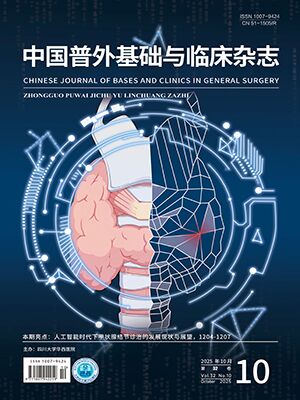| 1. |
gockel I, Müller M, Schumacher J. achalasia-a disease of unknown cause that is often diagnosed too late. Dtsch Arztebl Int, 2012, 109(12):209-214.
|
| 2. |
Wei M, Yang T, Yang X, et al. Peroral esophageal myotomy versus laparoscopic Heller, s myotomy for achalasia:a meta-analysis. J Laparoendosc Adv Surg Tech A, 2015, 25(2):123-129.
|
| 3. |
Evsyutina YV, Trukhmanov aS, Ivashkin VT. Family case of achalasia cardia:case report and review of literature. World J Gastroenterol, 2014, 20(4):1114-1118.
|
| 4. |
Mearin F, Mourelle M, guarner F, et al. Patients with achalasia lack nitric oxide synthase in the gastro-oesophageal junction. Eur J Clin Invest, 1993, 23(11):724-728.
|
| 5. |
5向正國, 張忠兵.賁門失弛緩癥的病因、病理和發病機制研究進展.中華內科雜志, 1999, 38(7):494-496.
|
| 6. |
Little ag, Correnti FS, Calleja IJ, et al. Effect of incomplete obstruction on feline esophageal function with a clinical correlation. Surgery, 1986, 100(2):430-436.
|
| 7. |
Tung HN, Schulze-Delrieu K, Shirazi S, et al. Hypertrophic smooth muscle in the partially obstructed opossum esophagus. The model: histological and ultrastructural observations. Gastroenterology, 1991, 100(4):853-864.
|
| 8. |
Schneider JH, Peters JH, Kirkman E, et al. are the motility abnormalities of achalasia reversible? an experimental outflow obstruction in the feline model. Surgery, 1999, 125(5):498-503.
|
| 9. |
ates F, Vaezi MF. The pathogenesis and management of achalasia: current status and future directions. Gut Liver, 2015, 9(4):449-463.
|
| 10. |
Patel Da, Kim HP, Zifodya JS, et al. Idiopathic (primary) achalasia: a review. Orphanet J Rare Dis, 2015, 10:89.
|
| 11. |
Hoshino M, Omura N, Yano F, et al. Immunohistochemical study of the muscularis externa of the esophagus in achalasia patients. Dis Esophagus, 2013, 26(1):14-21.
|
| 12. |
Deloyers L, Cordier R, Duprez a. a new approach to the physiology of so-called cardiospasm:experimental production of cardiospasm in cats after destruction of auerbach's plexus. Ann Surg, 1957, 146(2):167-177.
|
| 13. |
gaumnitz Ea, Bass P, Osinski Ma, et al. Electrophysiological and pharmacological responses of chronically denervated lower esophageal sphincter of the opossum. Gastroenterology, 1995, 109(3):789-799.
|
| 14. |
向正國, 張忠兵, 朱梁, 等.賁門失弛緩癥犬動物模型的建立.世界華人消化雜志, 2002, 10(11):1275-1277.
|
| 15. |
Vespúcio MV, Paschoal RM, Zucoloto S, et al. a new experimental model to study preneoplastic lesions in achalasia of the esophagus. Acta Cir Bras, 2005, 20(6):418-421.
|
| 16. |
Wagner JP, Sullins VF, Dunn JC. a novel in vivo model of permanent intestinal aganglionosis. J Surg Res, 2014, 192(1):27-33.
|
| 17. |
Watanabe Y, ando H, Seo T, et al. attenuated nitrergic inhibitory neurotransmission to interstitial cells of Cajal in the lower esophageal sphincter with esophageal achalasia in children. Pediatr Int, 2002, 44(2):145-148.
|
| 18. |
趙艷民, 粱振, 李仲榮, 等.苯扎氯銨對食管下端肌間神經毀損效果的研究.中華小兒外科雜志, 2009, 30(5):307-310.
|
| 19. |
臧鳳莉, 白寧, 王寶菊, 等.賁門失弛緩癥治療的現狀和進展.現代生物醫學進展, 2015, 6:1160-1164.
|
| 20. |
Chen WF, Li QL, Zhou PH, et al. Long-term outcomes of peroral endoscopic myotomy for achalasia in pediatric patients:a prospective, single-center study. Gastrointest Endosc, 2015, 81(1):91-100.
|
| 21. |
Vailati C, Mazzoleni g, Testoni Pa, et al. an Italian family with inherited achalasia. Dig Liver Dis, 2013, 45(6):524-525.
|
| 22. |
O'Neill OM, Johnston BT, Coleman Hg. achalasia:a review of clinical diagnosis, epidemiology, treatment and outcomes. World J Gastroenterol, 2013, 19(35):5806-5812.
|
| 23. |
annese V, Napolitano g, Minervini MM, et al. Family occurrence of achalasia. J Clin Gastroenterol, 1995, 20(4):329-330.
|
| 24. |
Sarathi V, Shah NS. Triple-a syndrome. Diseases of DNA Repair, 2010:1-8.
|
| 25. |
Papageorgiou L, Mimidis K, Katsani KR, et al. The genetic basis of triple a (allgrove) syndrome in a greek family. Gene, 2013, 512(2): 505-509.
|
| 26. |
Randelia HP, Deo Mg, Lalitha VS. Megaesophagus in mouse-histochemical studies. Gastroenterology, 1988, 94(5 pt 1):1243-1244.
|
| 27. |
Zizer E, Beilke S, B?uerle T, et al. Loss of Lsc/p115 protein leads to neuronal hypoplasia in the esophagus and an achalasia-like phenotype in mice. Gastroenterology, 2010, 139(4):1344-1354.
|
| 28. |
Taketomi T, Yoshiga D, Taniguchi K, et al. Loss of mammalian Sprouty2 leads to enteric neuronal hyperplasia and esophageal achalasia. Nat Neurosci, 2005, 8(7):855-857.
|
| 29. |
van der Weyden L, Happerfield L, arends MJ, et al. Megaoesophagus in Rassf1a-null mice. Int J Exp Pathol, 2009, 90(2):101-108.
|
| 30. |
Ye M, Zhang Q, Xu X, et al. Loss of JaM-C leads to impaired esophageal innervations and megaesophagus in mice. Dis Esophagus, 2015 Jun 30. doi:10.1111/dote.12383.[Epubaheadofprint].
|
| 31. |
Pang J, Borjeson TM, Muthupalani S, et al. Megaesophagus in a line of transgenic rats:a model of achalasia. Vet Pathol, 2014, 51(6): 1187-1200.
|
| 32. |
Takahashi R, Hirabayashi M, Ueda M. Production of transgenic rats using cryopreserved pronuclear-stage zygotes. Transgenic Res, 1999, 8(5):397-400.
|
| 33. |
Singh R, ghoshal UC, Misra a, et al. achalasia is associated with eNOS4a4a, iNOS22ga, and nNOS29TT genotypes:a case-control study. J Neurogastroenterol Motil, 2015, 21(3):380-389.
|
| 34. |
Fei L, Rossetti g, Moccia F, et al. Definition, incidence and etiology: what's new in the 21st century? Ann Ital Chir, 2013, 84:489-494.
|
| 35. |
gockel HR, Schumacher J, gockel I, et al. achalasia:will genetic studies provide insights? Hum Genet, 2010, 128(4):353-364.
|




